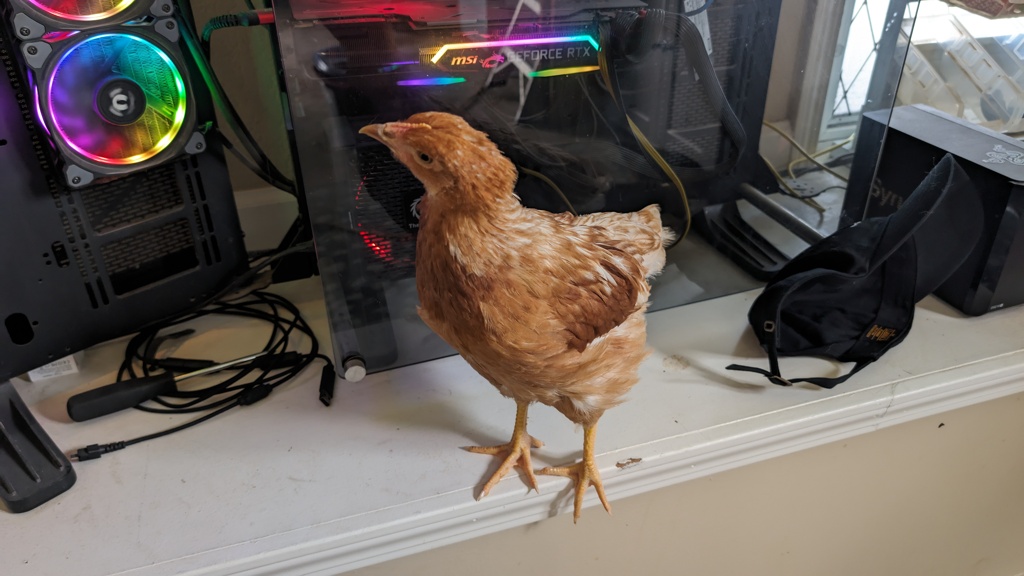Great article. Also pretty sad to see what we’ve ended up with in the name of business. Maybe if humanity survived another few hundred years we will look back on this time of corporations with disgust.
Humanity will survive. Our current society may not.
As just another form of creeping oppression, leading to a renewal of absolutism.
I wonder if we ever find a system that doesn’t require a constant fighting for freedom and basic rights.
‘As a paper in the journal Poultry Science puts it, if humans grew as fast as broilers, “a 6.6 lbs. newborn baby would weigh 660 lbs. after 2 months.”’
So percentage weight isn’t a perfect stat for cross species comparisons I understand that but holy shit that’s messed up. And it’s not like theres no other evidence of this being insanely unhealthy for the species…
Thanks. That was very interesting.
Hmmm, roughly doubling in size every 20-30 years. Fortunately it should be at least a few centuries before we really have to worry.
Relevant XKCD: https://xkcd.com/605/
Relevant radio drama: https://www.youtube.com/watch?v=Ao4ySjqjV3c
Actually, chickens are already so big, they’ll die from the weight before getting to adulthood.
In the 1950s, a competition was held to create the “chicken of tomorrow” through selective breeding. This is the path that got us to the modern broiler chicken. Unlike their recent ancestors (and much unlike their distant ones) these birds grow so large so quickly that they are prone to health issues and disease.
This is a quick and interesting read: https://exhibits.library.cornell.edu/backyard-revival-american-heritage-poultry/feature/the-chicken-of-tomorrow
I saw a nutjiub once protesting selective breeding, calling it ‘Eugenics for Plants and Animals’, saying we should all return to the planet.
He returned to the planet pretty fast after I pushed him in a well.
Source: Entirely made up
I’m all for selectively breeding crops. It’s selectively breeding animals where it gets ethically murky for me.
Should we be supporting the breeding of snub-nosed dog breeds, for instance, considering the respiratory issues they have? What about broiler chickens that can’t stand up and are prone to cardiac issues? What about egg-laying hens that commonly develop osteoporosis, egg yolk peritonitis, and cloacal prolapse? Cows bred to produce so much milk they display severe discomfort and are prone to mastitis?
Like I said, the lines get blurred quite a bit when you have to also consider the health and comfort of animals.
I think selective breeding of animals is just as bad as arranged marriage.
Wait a minute, are selective breeding and arranged marriage the same thing?
I’m pretty sure that’s a really the same chicken 3 times. I’ve raised quite a few chickens and grew up around neighbors raising them, though the grayscale makes it hard to be sure.
As someone else pointed out: the comb (head piece) is missing from the first 2 pictures:
Pic 1 looks like a chicken at maybe a month old or so, maybe a bit younger?
Pic 2 is 3ish months
Pic 3 is 6-8 months, basically adult

Regardless of whether they used the same chicken for the photoshoot, these images pretty accurately depict how drastically broiler chickens have changed through the latter half of the 20th century.
Prior to the 1940s, chicken wasn’t a super popular meat, and it was generally old egg-layers that were killed for meat. As demand for chicken grew, broilers were selectively bred for feed conversion, weight and time to slaughter.
The modern broiler chicken grows to an enormous size in a very short (6-8 week) timeframe. They also tend have some pretty bad health issues as a result: impaired mobility, cardiac issues and a compromised immune system.
“You mean super ultra mega chicken? Shh! He is legend!”
in a few years you’ll be able to feed a whole family with just one chicken
I mean… You can now, plus some veg.
I love this meme, makes me laugh every time!
its putting on some weight thats for sure
What if chickens seem simple because they share a single hive mind?
At some point it looks like a final boss, towering over us with laser eyes and an angry Dr. Wily shouting obscenities piloting it.
Birds are basically today’s lizards and like most lizards can live a very long time and grow throughout their lives. When you think about how big alligators can get in a similar amount of time, it isn’t surprising that chickens can also.
My chickens don’t keep growing luckily and I had a few that were over a decade.
That’d be one tough old bird. I wouldn’t eat it either.
I have a 23-year-old ball python. I can confidently say he has not grown throughout his entire life, and has in fact for the last almost two decades stayed at a comfortable 3.5’ long.
Maybe he is going to live a couple centuries and your short window onto his life has foreshortened your view?
52
Quick mafs.
So it’s a ghoul then.
That’s not just any chicken, that’s The Chicken of Tomorrow!







